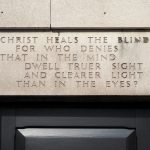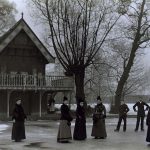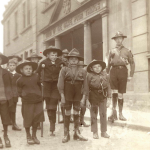Survey results: deaf and disabled people in the cultural sector
We ran two surveys to gain a snapshot of how D/deaf and disabled people are represented in the museum workforce. Here’s an overview of the results.
 Chiswick House, London
Chiswick House, London
 Maison Dieu, Faversham
Maison Dieu, Faversham
 Liverpool School for the Indigent Blind, Liverpool
Liverpool School for the Indigent Blind, Liverpool
 Langdon Down Museum of Learning Disability, Teddington
Langdon Down Museum of Learning Disability, Teddington
 The Royal School for Deaf Children, Margate
The Royal School for Deaf Children, Margate
 Guild of the Brave Poor Things, Bristol
Guild of the Brave Poor Things, Bristol
 St Saviour’s Deaf Church, Acton
St Saviour’s Deaf Church, Acton
 Grove Road Housing Scheme, Sutton-in-Ashfield
Grove Road Housing Scheme, Sutton-in-Ashfield
Our volunteers have been working hard and having great adventures along the way. Browse the stories below or click on an individual image to see more from an individual volunteer.
We ran two surveys to gain a snapshot of how D/deaf and disabled people are represented in the museum workforce. Here’s an overview of the results.
If our funding bids succeed, we are hoping to work with 18 museums across the country on a sector-changing programme to give D/deaf and disabled people career paths and influence in a sector where we are currently very under-represented.
This short film, narrated by Maggie Davis and showing images from her archive, tells the story of how she and her husband Ken resisted being institutionalised in 70s Britain and started the Independent Living Movement.
A brief introduction to the history of Deaf people from the late 18th century onwards. Signed by John Wilson.
Accentuate is planning a work placement project to increase the number of deaf and disabled people employed in museums. Help inform our plans by completing a short survey.
Not sure where to start providing better access to your exhibitions? These toolkits helps museums and heritage sites make a better offer to deaf and disabled visitors.
A group of Deaf people have made a short film about the history of St Saviour’s Deaf Church, featuring Stanley, aged 99 and Jovita, 13.
Can your museum or heritage site commit to one or more of these pledges to employ and represent deaf and disabled people?
At our final event at the House of Commons with funders and policy makers, we made the case for all our project has achieved – and looked for the pledges that will embed the stories of deaf and disabled people in museums in the future.
Read our celebration document describing the achievements of History of Place over three years – and our plans to embed these successes in the cultural sector in the future.